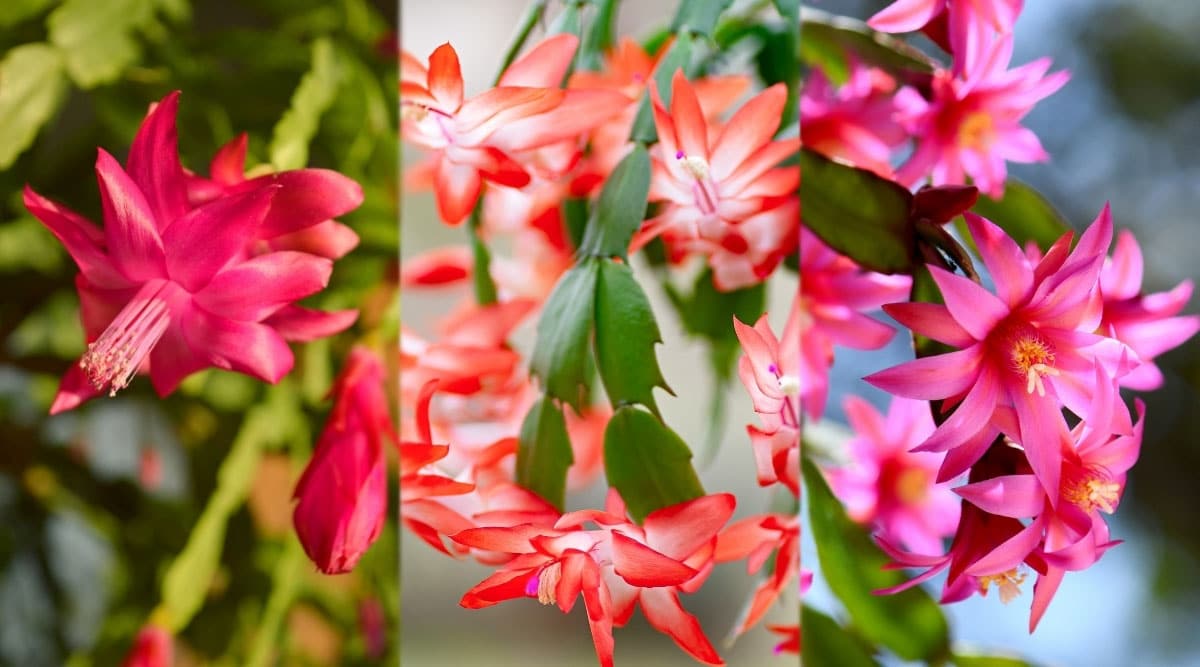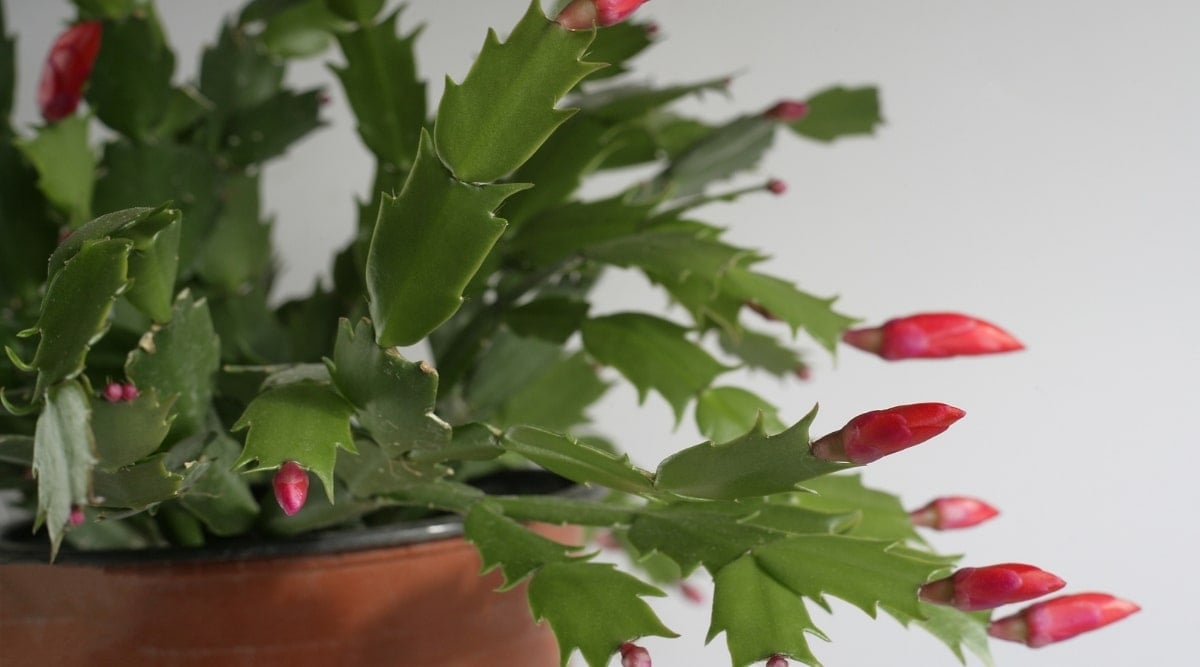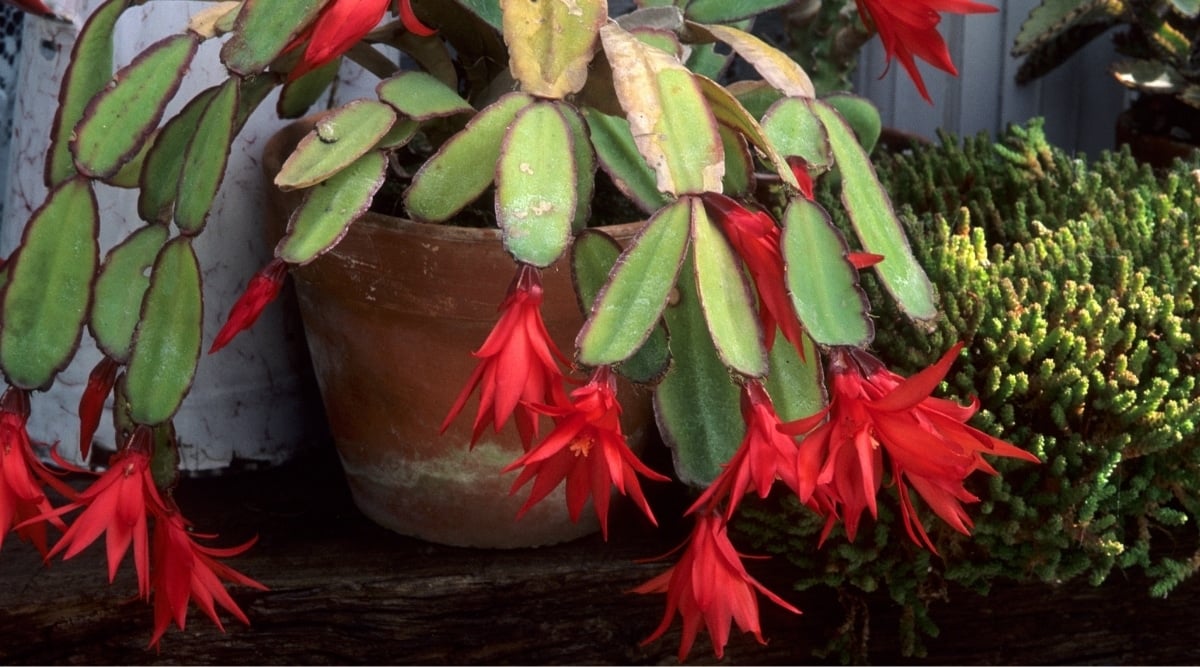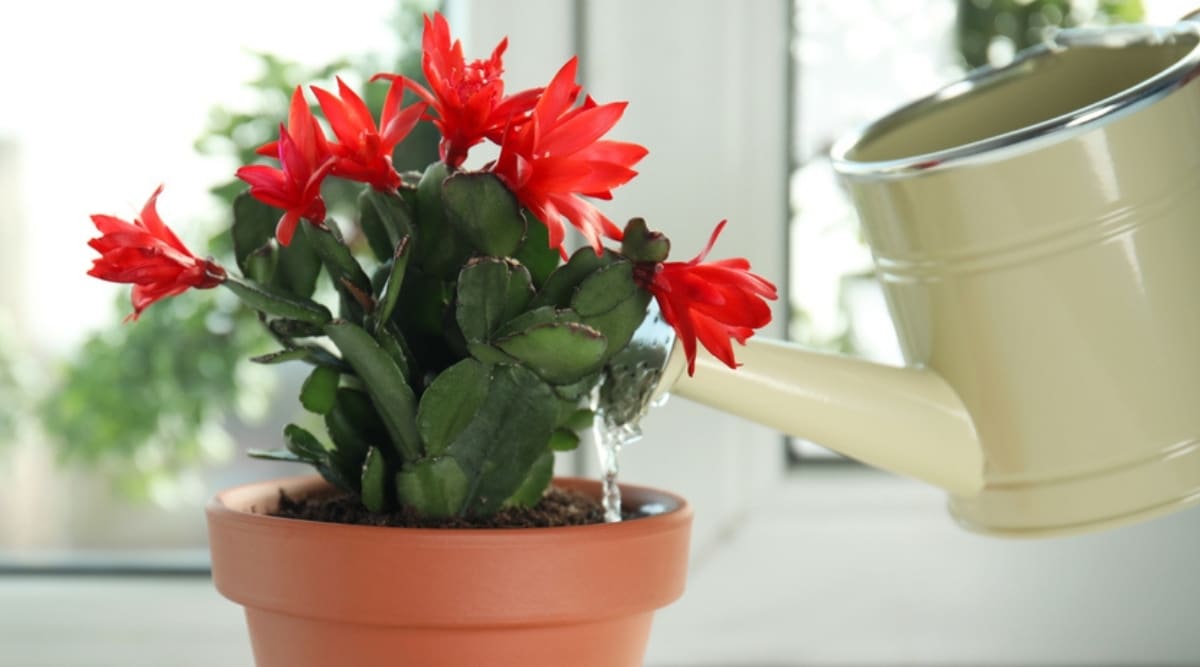Choosing between Christmas, Thanksgiving, and Easter Cacti? Wondering if they are distinct or alike? Let’s unearth the unique traits of each succulent to aid your decision-making process for your indoor botanical display.
The Cactaceae family boasts around 150 genera and about 2,500 species across the globe. In this discourse, we magnify three renowned seasonal plants – Christmas, Thanksgiving, and Easter cacti.
Incorporating seasonal cacti into your decor injects vibrancy and offers a low-maintenance houseplant option akin to Tillandsia and various Pothos varieties.
This compact guide meticulously dissects the subtle disparities among these cacti, delving into their unique characteristics individually. Whether you’re decking your halls for the holidays or seeking the ideal seasonal cactus gift, this breakdown is your ultimate reference point.
Unraveling Seasonal Cacti Histories

Both the Christmas and Thanksgiving cacti hail from the Schlumbergera family, rooted in the Brazilian rainforests. Discovered by Allen Cunningham in the early 19th century, these tropical cacti derived their genus name from the botanist Frederic Schlumberger.
The Thanksgiving cactus typically blooms slightly ahead of the Christmas cactus. Intriguingly, in their native habitat, both flower between April and May without their festive monikers.
Conversely, the Easter cactus thrives within the Hatiora family, originating from the drier Brazilian forests. Pertinently, limited data exists on the Easter cactus’s discovery timeline, likely aligning with its seasonal cacti compatriots.
Deciphering Variances
Oftentimes, the Christmas, Thanksgiving, and Easter cacti are misconstrued for one another, complicating purchase decisions. Merchants and retailers further blur the lines by labeling them interchangeably or as Zygocactus.
Thankfully, there are three straightforward differentiators distinguishing these cacti, aiding in swift identification.
Leaf Patterns

Leaf structure serves as a definitive feature to distinguish these cacti swiftly. While initial similarities may mislead, closer scrutiny reveals noteworthy distinctions in leaf shapes.
The Christmas cactus displays flat, slender leaves with scalloped edges, contrasting with the Thanksgiving cactus’s pointed, broad leaves. In contrast, the Easter cactus boasts flat, round leaves adorned with fine hairs.
Blossoms and Timelines

Distinguishing the cacti by their blooms enhances identification accuracy. Christmas cactus blooms typically droop in a pendulum shape with brown or purple anthers, while Thanksgiving cacti share similar blooms but with yellow anthers, reminiscent of Fuchsia blooms. The Easter cactus, distinguished by larger, starburst-shaped blooms, blooms in early spring.
Though primary colors offer a discerning factor, reliance solely on color proves unreliable due to overlapping hues:
- Christmas cactus – pink, red, white, yellow
- Thanksgiving cactus – orange, peach, red, purple
- Easter cactus – orange, pink, peach, white, red
Structural Variances

Identifying the three types of cacti can also be done by observing their overall cactus shape. This distinctive feature is most noticeable when the cactus reaches maturity and may not be ideal for immediate differentiation.
The Christmas cactus tends to start with an erect growth pattern that gradually transitions into a drooping form as the stems elongate. On the other hand, the Thanksgiving cactus maintains an upright growth habit without drooping. The Easter cactus, although it starts upright, eventually develops drooping stems, being the smallest of the trio.
Christmas Cactus

The Christmas cactus, known scientifically as Schlumbergera bridgessii, typically buds in November, preparing to bloom around the Christmas season. To maintain a healthy Christmas cactus, specific care is required due to its winter blooming cycle. The blooms of this cactus are usually tiered and can grow up to 3 inches long.
Care

To ensure the well-being of your Christmas cactus, provide it with indirect to bright light, avoiding direct sunlight to prevent leaf scorching. Apply a mild houseplant fertilizer every two weeks and maintain temperatures between 60 and 70 degrees Fahrenheit throughout the year. Since the Christmas cactus originates from the rainforest, adequate moisture is vital. Placing the pot on a tray of stones with water helps increase humidity levels.
During the growing seasons (spring and summer), ensure the soil remains consistently moist but not waterlogged to prevent root rot. It’s crucial to find a balance between underwatering and overwatering to promote healthy growth.
Blooms

To stimulate blooming for your Christmas cactus, initiate a dormancy period approximately 6 to 8 weeks before the desired blooming period. Alter the light, temperature, and moisture conditions to simulate its natural blooming cycle. Provide the cactus with 12 to 14 hours of darkness daily while keeping temperatures between 50 and 55 degrees Fahrenheit. Adjust watering schedules accordingly until blooms begin to appear.
Consistent care throughout the year can lead to multiple bloom cycles. Allow the plant to rest for a month post-blooming before resuming regular care routines.
Thanksgiving Cactus

Derived from the same genus as the Christmas cactus, the Thanksgiving cactus, scientifically known as Schlumbergera truncata, starts budding in late autumn, with flowering usually occurring during colder periods. Its blooms can persist for 2 to 4 months.
Care

Being a tropical plant, the Thanksgiving cactus should have consistently moist soil without water stagnation, which can lead to root and fungal complications. Proper but controlled watering is essential to promote healthy growth.
For optimal growth, ensure the soil of your cactus is nearly dry before watering it again. To provide moisture, like the Christmas cactus, place it on a tray of pebbles and water.
It is recommended to maintain temperatures between 60 and 70 degrees consistently. Take care when handling as the delicate blooms can easily fall off. Avoid drafts at all costs.
Blooms


In late summer to early fall, the Thanksgiving cactus needs encouragement to bloom. Similar to the Christmas cactus, it thrives in cooler temperatures, reduced water, and shorter daylight exposure. Ensure the plant experiences 12 to 14 hours of total darkness once buds have formed. Adjust soil moisture levels and limit water exposure by removing stone trays to reduce humidity in the surrounding air.
During the blooming phase, maintain temperatures between 50 and 55 degrees. Following the blooming period, allow the cactus one month of rest before resuming the regular yearly care routine.
Easter Cactus


Unlike the Christmas and Thanksgiving cacti, which originate from rainforests, the Easter cactus comes from drier forests in Brazil. This cactus blooms from February to late March.
Care


For the Easter cactus, adequate light, cooler temperatures, and lightly moist soil are essential. Prioritize soil dryness before the next watering session. To enhance humidity, place the planter on a dish with stones and a small amount of water for evaporation around the plant.
Repot this plant every two years in spring, using a slightly pot-bound approach. After the blooming phase, introduce a monthly 10-10-10 or low-nitrogen fertilizer routine.
Blooms


Following the mentioned care practices, your Easter cactus should bloom around February. Sometimes, additional steps are required to trigger blooming, such as withholding feeding and reducing watering from October onwards. Watering once every 3 to 6 weeks is advised due to its non-tropical nature.
For optimal bud development, expose the plant to cooler nighttime temperatures and elongated dark periods. Buds thrive at around 50 degrees, with a subsequent temperature adjustment to 60 to 65 degrees in December. Provide 12 to 14 hours of darkness nightly.
Final Thoughts
The Christmas, Thanksgiving, and Easter cacti share similarities, with the Christmas and Thanksgiving cacti belonging to the same plant family. Differences in their leaf structures can help differentiate them effectively.
Despite their similarities, these cacti require dormancy induction to provoke their vibrant blooms. Ensuring the correct cactus is gifted during the appropriate season is crucial to avoid any color mismatch and potential embarrassment.
With a good grasp of these cacti’s identification and care requirements, you’ll become a valuable source of seasonal cactus knowledge, possibly even educating plant vendors along the way.






